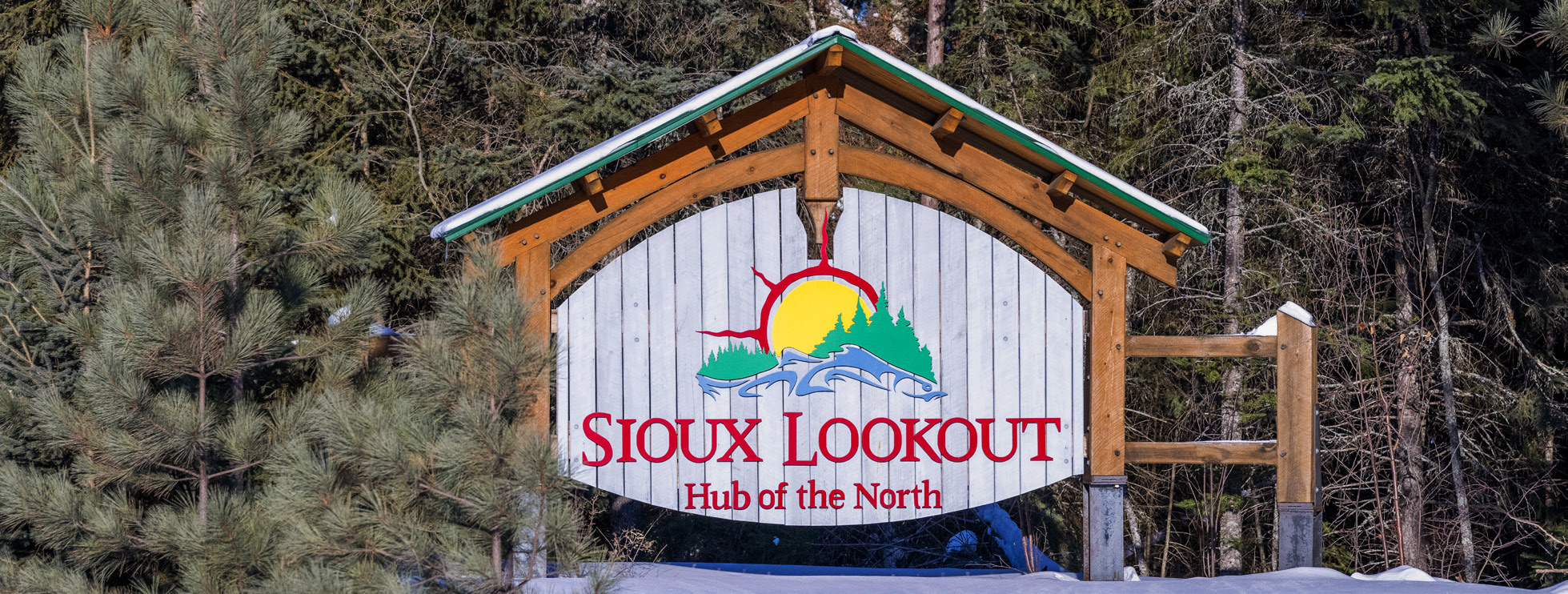Two Northern Ontario communities share successes with recruitment

Sault Ste. Marie and Sioux Lookout are great places to work—and the word is getting out
Dr. Mara Boyle didn’t originally think that her career would lead her to family medicine—or to Sioux Lookout. Plans changed when her third year of NOSM University’s MD program brought her to the small town, four hours north of her hometown of Thunder Bay.
“I didn’t really want to be a family physician when I arrived in Sioux Lookout in my third year. I thought that I was going to become a specialist,” Dr. Boyle explains. “One of the aspects of working in Sioux Lookout is that you practise a broad scope of family medicine. I found it difficult to think about putting myself into a specialty after my Comprehensive Community Clerkship. That’s been a big driver for my career; why I chose family medicine, and why I returned to Sioux Lookout, first for residency and then to practise.”
Dr. Boyle is not alone. Of the 11 physicians contracted at Sioux Lookout’s Hugh Allen Clinic, seven are former residents. Six physicians—more than half of the doctors at the clinic—completed a NOSM University residency in the community.
Hugh Allen Clinic Manager, Linda McNaughton, cites residents as the single greatest success story for local physician recruitment, and she points out the positive experiences that residents often have.
“I think our success can be attributed to the variety of roles and the opportunity to be flexible with scheduling and preferred medical practice. The work in the clinic is very well supported by experienced long-term support staff and seasoned mentors with over 30 years of experience. Being able to walk down the hall to get advice and share experiences is very rewarding,” McNaughton says.
“One of the special things about Sioux Lookout—and it is immediately apparent—is that the physicians really are a community,” she says. “Everyone holds each other up. The very strong collegial environment was a huge draw, and it made a big difference in my transition from residency to practice. If I needed help in the middle of the night, I always knew there was someone who would pick up the phone.”

This strong sense of community extends beyond work. Dr. Boyle notes that her personal and professional lives have merged: the physicians get together regularly, and their children have become friends. “It’s a very vibrant physician community,” she says.
Like Dr. Boyle, Dr. Allison Webb in Sault Ste. Marie is a family physician whose practice includes obstetrics. Dr. Webb, too, is a NOSM University alumna who completed both her Comprehensive Community Clerkship and her residency in the community where she now lives.
“During my Comprehensive Community Clerkship, my first impression was that—professionally—Sault Ste. Marie was very supportive to work in,” Dr. Webb says. “Students were treated like real people, our time was respected, and everyone appreciated that we were there to learn. The staff were happy, and everyone I talked to liked working here. It seemed like a good place to practise, with lots of collegial support. I had a very positive experience.”
Although Dr. Webb met her husband in Sault Ste. Marie, it wasn’t a given that they would stay there. She says that she chose Sault Ste. Marie for her residency and career because she felt supported to work, learn, and grow in her practice, and because the city had a lot to offer.
Personal and professional lives are both major factors in where physicians decide to live and work, according to Carrie Stewart, Manager of Physician Recruitment and Retention at Sault Area Hospital. Local recruitment efforts are led by a recruitment and retention committee and are based on a tri-party agreement funded by the City of Sault Ste. Marie, Sault Area Hospital, and the Group Health Centre.
“Actions that the city takes—such as developing downtown, events, music, and restaurants, mountain bike trail expansion—all help bring doctors to Sault Ste. Marie. Our coordinated city-wide effort allows us to showcase our whole community, different practice options, and how our community is supportive and welcoming,” Stewart says.
Stewart’s job involves keeping connections to those completing medical education from Sault Ste. Marie as well as attracting physicians from across Ontario, nationally and even internationally. Prospective physicians’ community visits are individually tailored based on professional as well as community needs. Visits often include options for spousal employment, schools, daycare, recreational activities, and personal interests of the entire family.
“If I had to say there’s a secret sauce to recruitment, it’s open and honest communication with physicians,” she says. “It’s a long process of building connections to make sure the entire family is supported. It doesn’t happen overnight.”
Some of the community’s greatest success comes from a placement very early in medical school, years before learners start their residency or practice: the NOSM University Summer Studentship Program. This program is often students’ first clinical experience and is open to first- and second-year medical students, as well as learners studying in a wide variety of medical fields, including nursing, rehabilitation studies, medical radiation, lab technicians, dieticians, midwifery, and respiratory therapists. For medical students in Sault Ste. Marie, it aims to offer diverse learning, including clinical exposure in both hospital and community placements such as emergency room and ambulance ride-alongs.
Sioux Lookout by the numbers
42 contracted physicians (including 3 surgeons, 1 infectious disease, the rest family medicine)
30 of those physicians underwent training after the creation of NOSM University in 2005.
Of those 30 physicians, 77 per cent completed at least some portion of their training through NOSM University (including medical school, residency, PGY3 year, visiting electives).
Of the 23 physicians who reside in Sioux Lookout, 82 per cent completed at least some portion of training through NOSM University.
More than 860,000km2 and over 80 per cent of Ontario’s landmass, Northern Ontario has some of the worst health indicators in Canada
The health-care needs of the Northern population are complex, having the most vulnerable, unhealthy populations of any geography in Ontario.
And it’s working. Stewart says learners placed in the city often come back to Sault Ste. Marie again and again for medical rotations. Over the last 20 years, 202 physicians have been recruited to the community. Impressively, 23 per cent have completed NOSM University’s Summer Studentship Program.
A host of other options, including clerkships, electives, residency spots, and core rotations, also bring medical learners to the community. These options are central to recruitment, Stewart says. Over half of the 202 physicians recruited completed training in Sault Ste. Marie as part of a medical rotation.
Despite these successes, physician recruitment and retention remain a challenge in Northern Ontario.
“The challenges for recruitment are now so great that it is all hands-on deck,” say McNaughton. She points out that, while the Sioux Lookout Regional Physicians Services Inc. is the regional lead on recruitment, the Hugh Allen Clinic does much of its own recruiting.
Dr. Boyle agrees that recruitment is a challenge and says that it was largely local physicians who recruited her to Sioux Lookout. “Doctors end up taking on a recruiting role and chatting with residents and friends,” she says. “Everyone has such a varied practice, and there was lots of assistance in helping me envision what I wanted my practice to be.”
“To do this alone would be very difficult. I’d suggest going with a community-wide effort and building that relationship with NOSM University and bringing as many learners as you can. Create that warm welcome within the medical community and that will be your best marketing. They will be back, and they’ll spread the word,” says Stewart.
People in Northern Ontario have a shorter life expectancy, the highest rates in the province for opioid addictions, mental health, cardiac disease, cancer, and diabetes. We also have an aging population and have significantly less access to health care than most of Canada. In addition, a high number of far north and remote First Nations communities continue to face longstanding food insecurity, boil water advisories, and high rates of chronic diseases.
NOSM University, through its research and advocacy has been addressing this problem with government, the public and through fundraising.
